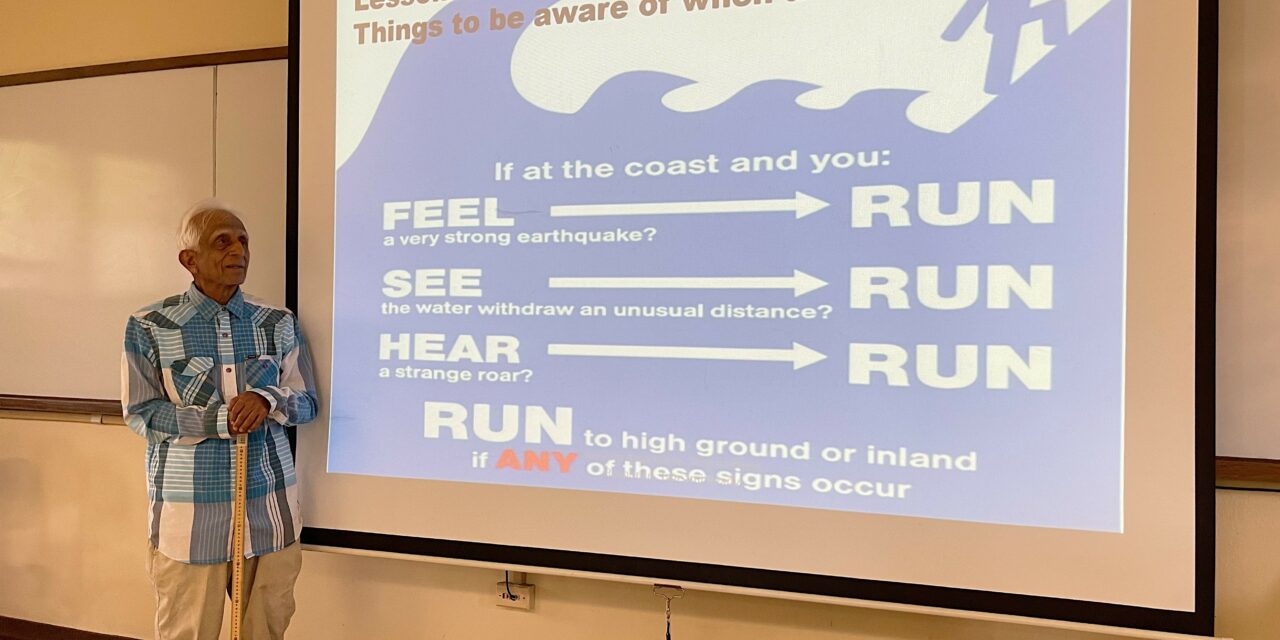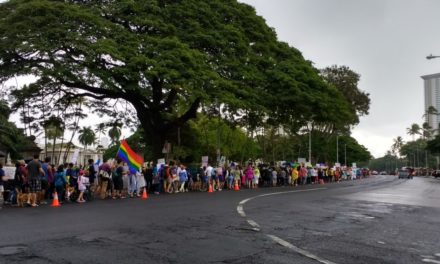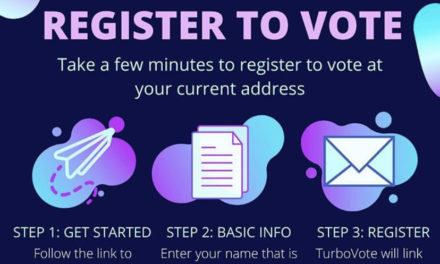KCC Geology and Geophysics Earth Science professor Nasir M. Gazdar wishes to prepare students for tsunamis; he believes that “knowledge is safety.” (Photo by Juri Dagio)
By Juri Dagio | Staff Writer
The State of Hawai’i proclaimed April to be “Tsunami Awareness Month” to honor 158 lives taken by the 1946 “April Fools’ Day Tsunami” that impacted the Big Island and La’ie town on O’ahu. To raise awareness at KCC, senior lecturer Nasir M. Gazdar, who has been teaching Earth Science for 30 years, is having a short presentation in Lama 118 on Wednesday from 9:15 a.m. to 10:30 a.m.
According to Gazdar, the known scenic La’ie Point Arch on the North Shore of O’ahu was made by the 1946 tsunami that came in from Alaska. The Great Arch was originally a part of the island but was separated due to the impact of the tsunami.
“The houses were demolished,” he said. “Many people became the victim of this surge of the tsunami inundation.”
The height of the tsunami was recorded to be 55 feet or approximately 17 meters.
“History has told us that tsunamis can happen anytime; they happen in the ring of fire,” Gazdar said. “Local tsunamis can also happen because of volcanic eruptions.”
On January 15, 2022, Hunga Tonga-Hunga Ha’apai underwater volcano erupted in Tonga and triggered a 4-foot tsunami, seven hours after its eruption. As events like this can happen in Hawai’i, Gazdar wants to raise awareness of how people can determine natural tsunami warning signs and how they can prepare in order to survive a natural disaster such as tsunamis.
“Our main thing is to be tsunami ready,” Gazdar said. “Knowledge is safety.”
Here are some important information to know, according to Gazdar.
Tsunami alert levels:
- Information Statement – No tsunami impact expected
- Watch – Tsunami is possible
- Advisory – Strong currents and dangerous waves (wave heights of 1 – 3 feet)
- Warning – Tsunami imminent (wave heights of greater than 3 feet or unknown)
Natural tsunami warning signs:
- Feel a long or strong ground shaking at the coast.
- See a sudden rise or fall of the ocean.
- Hear a loud roaring sound coming from the ocean.
Essentials to take with when evading a tsunami:
- Waterproof flashlight
- Radio
- Helmet/Gloves
- Shoes
- First Aid Kit
It is possible for a tsunami to occur at any time. Therefore, students, as well as people of all ages, needs to be ready for any natural disaster that may happen. This month, Gazdar encourages students to take precautions and spread awareness about the dangers of tsunamis.
For any questions regarding the upcoming tsunami awareness presentation in Lama 118, email Gazdar at nasir@hawaii.edu.






